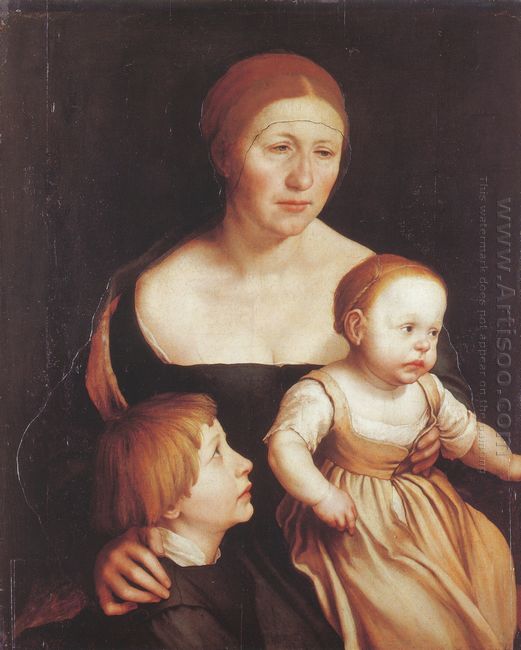Hans Holbein completed Charity the Family of the Artist between 1528 and 1529. Here the painter described the figures that he was most familiar with around him. This painting was also one of his most successful portraits. In this painting, with the delicate brushwork, the painter expressed his deep feeling for his family which was hard to find in the rest of his works. The artist’s wife was Elizabeth Bzhnstoke, a middle-aged woman who lived a very simple life and dealt with all the housework. Although she was not young, her face was still elegant, delicate and pretty. As her husband’s art activity was busy, the burden of the family seemed to make her whole body and mind haggard.
Two children nestled around the wife: the big boy was called Philippe, who was Holbein’s eldest son and seriously looked at the distance. The juvenile innocence and implied his desire for the future life. Between the wife’s knees, there was a little daughter called Katerina. Although her face was full of childishness, she seemed to also feel the adult’s worries. The figure’s head was as big as a person in the real life. According to some scholars, from other reproduced drawings, the original background of this painting possibly had some buildings and the right side was also cut off a piece. In the upper painting, there was originally a title. Now it was gone. It was his wife’s sick period when Holbein would go to Britain soon and have stayed for a while in Basel that the painter drew this painting. Seeing this scene can not help but make the painter’s tears trickle down his cheeks.
All of these were expressed in writing by the painter and the image was very touching. This painting was originally painted in the paper with four thick layers and then cut along the contour of the characters and mounted on board. It measured about 79 x 65 cm, which is preserved in the National Art Museum of Basel.
